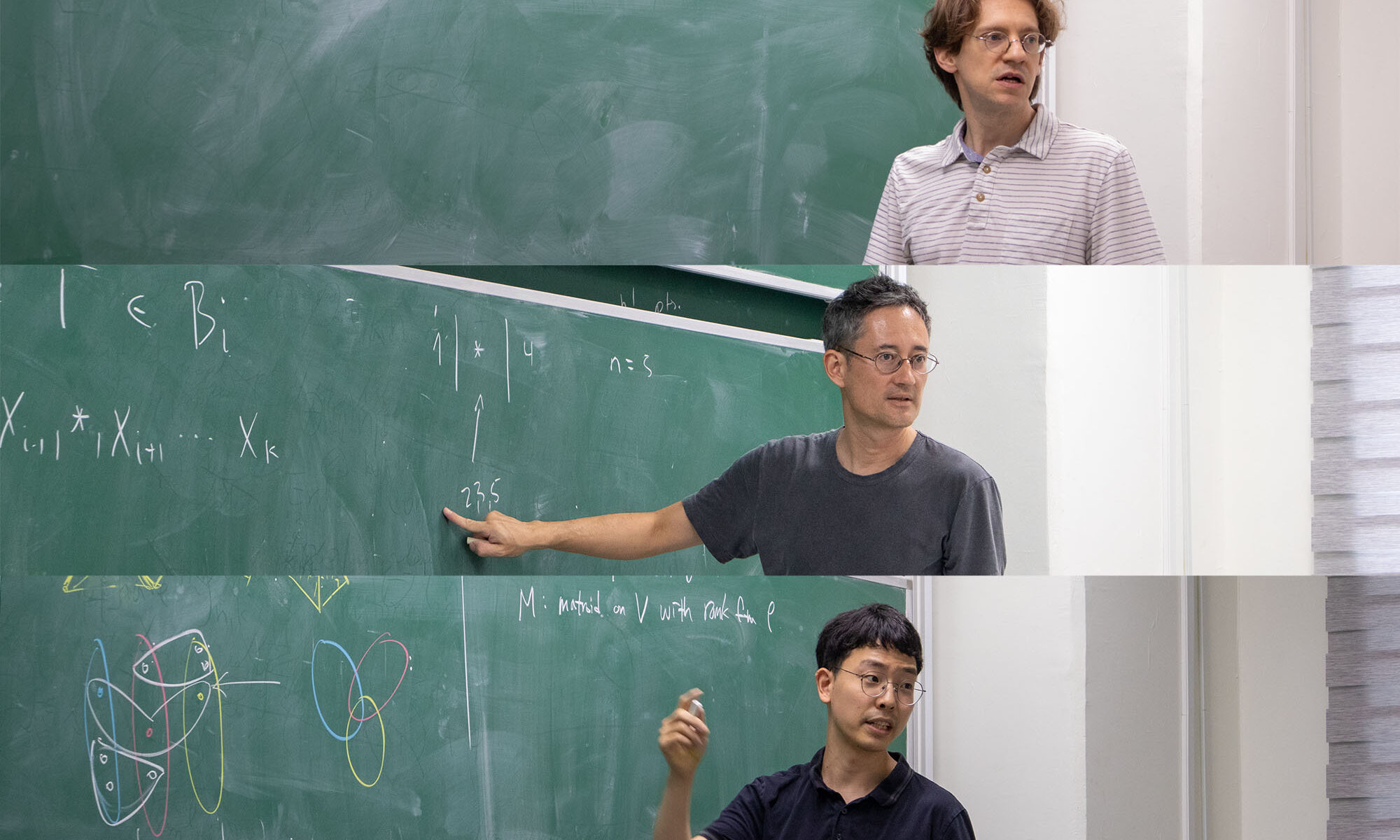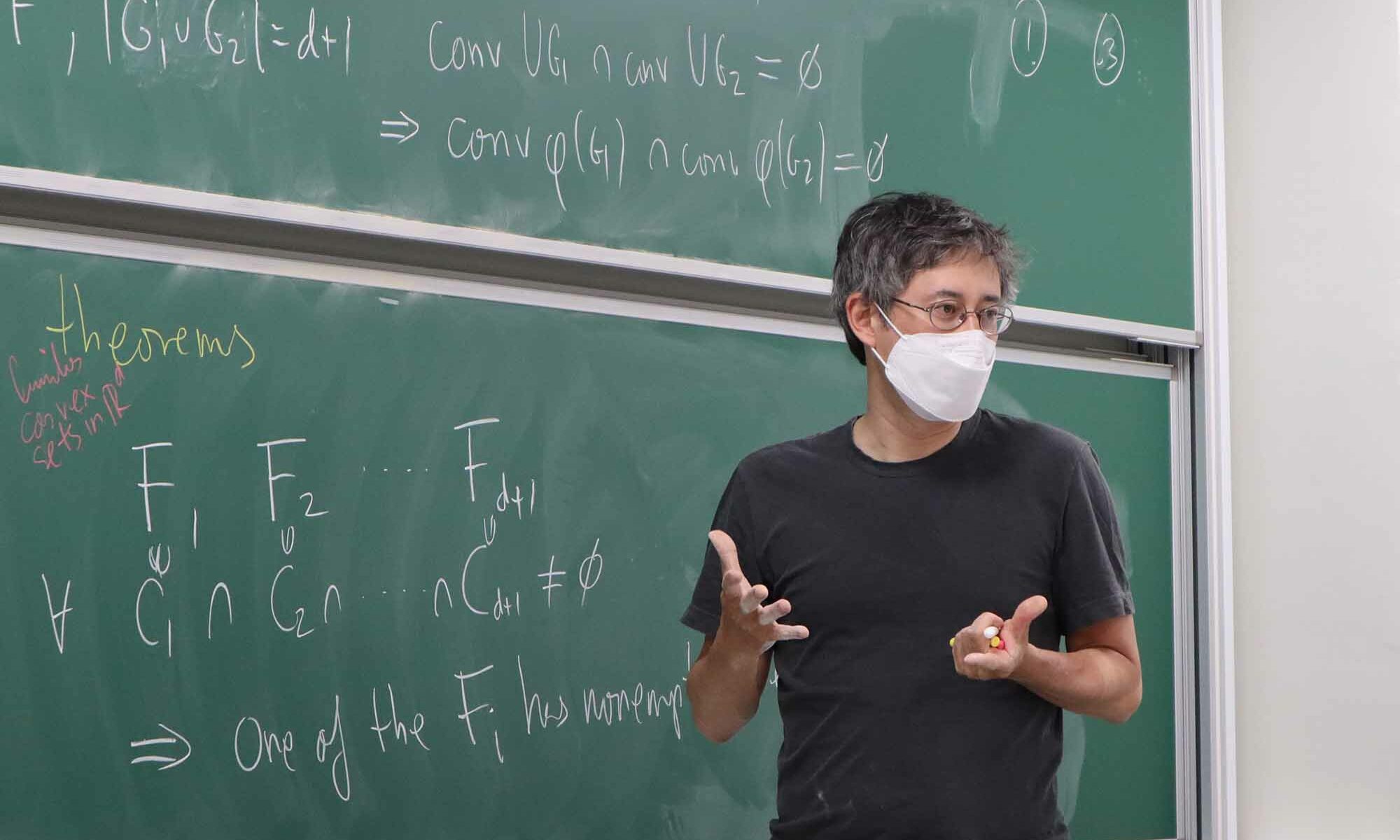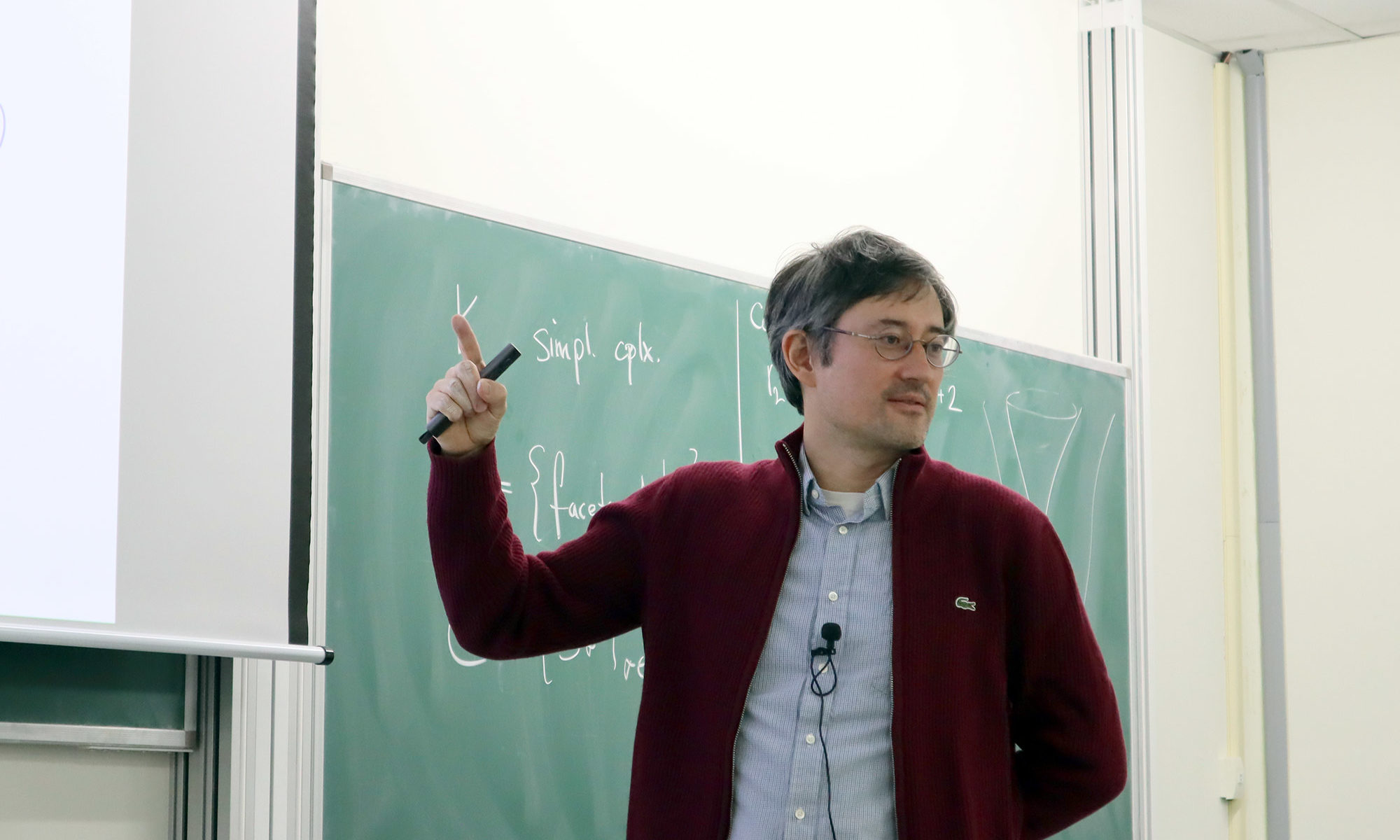The IBS Discrete Mathematics Group welcomes Prof. Andreas Holmsen from the Department of Mathematical Sciences, KAIST, Daejeon, Korea. He will visit the IBS Discrete Mathematics Group for 1 year from February 1, 2024 during his sabbatical leave from KAIST. He received his Ph.D. from the University of Bergen in 2004 under the supervision of Prof. Helge Tverberg and was at the University of Bergen, New York University, City College of New York before coming to KAIST.
The 2023 Mini-Workshop on Discrete Geometry was held on August 9 with three talks by Michael Dobbins, Andreas Holmsen, and Minki Kim
On August 9, 2023, the 2023 Mini-Workshop on Discrete Geometry was held at the IBS. This workshop consisted of three talks by Michael Dobbins from SUNY Binghamton, Andreas Holmsen from KAIST, and Minki Kim from GIST. Here is the list of talks.
- Michael Dobbins (SUNY Binghamton): Colorful intersections, Tverberg partitions, and geometric transversals
- Andreas Holmsen (KAIST): The topology of the complex of ordered partitions
- Minki Kim김민기 (GIST): Some variants of the colorful Helly theorems
Andreas Holmsen gave a talk on a colorful generalization of the Goodman-Pollack-Wenger transversal theorem
On May 16, 2022, Andreas Holmsen from KAIST presented a theorem proving a colorful generalization of the Goodman-Pollack-Wenger theorem, answering a conjecture of Arocha, Bracho, and Montejano, at the Discrete Math Seminar. The title of his talk was “A colorful version of the Goodman-Pollack-Wenger transversal theorem“.
Andreas Holmsen, A colorful version of the Goodman-Pollack-Wenger transversal theorem
Hadwiger’s transversal theorem gives necessary and sufficient conditions for the existence of a line transversal to a family of pairwise disjoint convex sets in the plane. These conditions were subsequently generalized to hyperplane transversals in $\mathbb{R}^d$ by Goodman, Pollack, and Wenger. Here we establish a colorful extension of their theorem, which proves a conjecture of Arocha, Bracho, and Montejano. The proof uses topological methods, in particular the Borsuk-Ulam theorem. The same methods also allow us to generalize some colorful transversal theorems of Montejano and Karasev.
Andreas Holmsen gave a talk about a counterexample to the Bárány-Kalai conjecture on line transversals of a finite family of convex sets at the Discrete Math Seminar
On January 11, 2022, Andreas Holmsen from KAIST gave a talk at the Discrete Math Seminar about the counterexample to the Bárány-Kalai conjecture on line transversals of a finite family of convex sets. The title of his talk was “Some recent results on geometric transversals“.
Andreas Holmsen, Some recent results on geometric transversals
A geometric transversal to a family of convex sets in $\mathbb R^d$ is an affine flat that intersects the members of the family. While there exists a far-reaching theory concerning 0-dimensional transversals (intersection patterns of convex sets), much less is known when it comes to higher-dimensional transversals. In this talk, I will present some new and old results and problems regarding geometric transversals, based on joint work with Otfried Cheong and Xavier Goaoc.
Andreas Holmsen gave a talk on combinatorial geometry in convexity spaces at the Discrete Math Seminar
On January 12, 2021, Andreas Holmsen from KAIST gave a talk on the combinatorial geometry in convexity spaces. The title of his talk was “Discrete geometry in convexity spaces“.

This seminar talk was in honor of Helge Tverberg, who passed away in December 28, 2020 and was the Ph.D. advisor of Andreas Holmsen.
Andreas Holmsen, Discrete geometry in convexity spaces
The notion of convexity spaces provides a purely combinatorial framework for certain problems in discrete geometry. In the last ten years, we have seen some progress on several open problems in the area, and in this talk, I will focus on the recent results relating to Tverberg’s theorem and the Alon-Kleitman (p,q) theorem.
Andreas Holmsen gave a talk on a recent work generalizing the fractional Helly theorem under very weak topological assumptions at the Discrete Math Seminar
On June 16, 2020, Andreas Holmsen from KAIST presented his recent work with Xavier Goaoc and Zuzana Patáková on generalizing the fractional Halley theorem under very weak topological assumptions. The title of his talk was “Fractional Helly and topological complexity“.
Andreas Holmsen, Fractional Helly and topological complexity
The fractional Helly theorem is a simple yet remarkable generalization of Helly’s classical theorem on the intersection of convex sets, and it is of considerable interest to extend the fractional Helly theorem beyond the setting of convexity. In this talk I will discuss a recent result which shows that the fractional Helly theorem holds for families of subsets of $\mathbb R^d$ which satisfy only very weak topological assumptions. The proofs combine a number of tools such as homological minors, stair-convexity, supersaturation in hypergraphs, Radon dimension, and Ramsey-type arguments. This is joint work with Xavier Goaoc and Zuzana Patáková.






